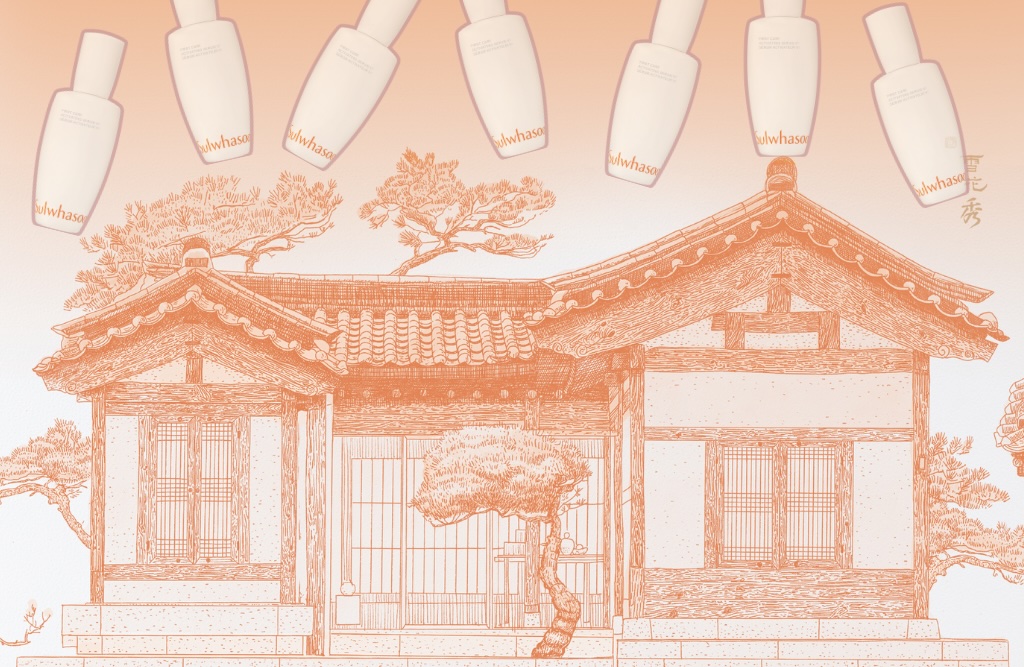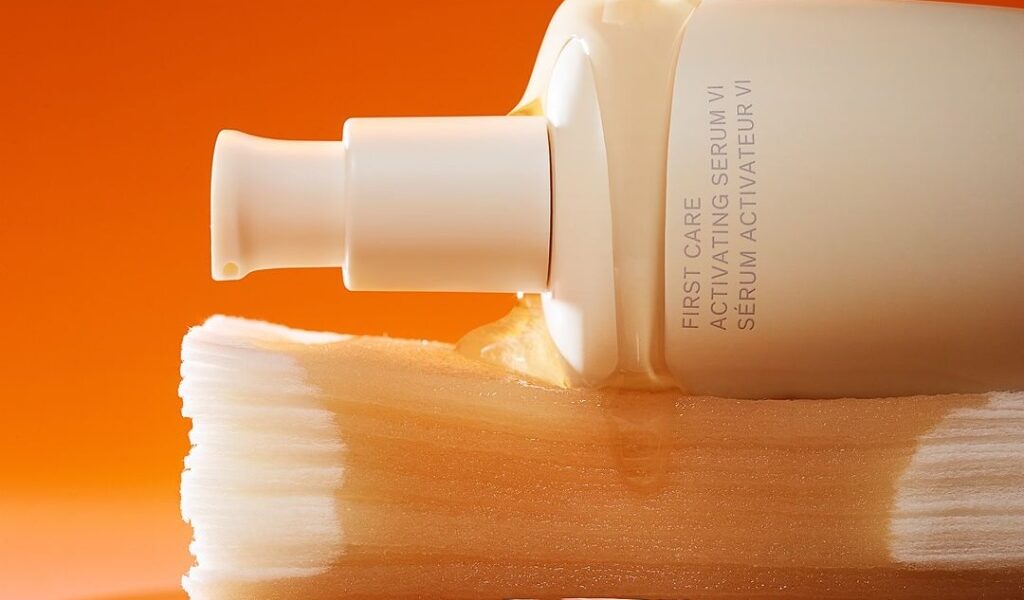Whether it’s GRWM posts or a 10-plus step celeb beauty secret videos, there is always one skincare step no one misses, and that’s serum. It’s impressive when you think that we, in North America (and Canada specifically), only learned about serums in the ’80s and ’90s. (The first-ever recorded skin routine was 3000 BC in Egypt). So, why are serums such an important part of a skincare regime? Let’s answer your skin-curious questions and break down the active ingredients in serums and how you can get the best results.
How to keep that summer feeling.
What are active ingredients?
You’ll hear the term “active ingredient” tossed around by dermatologists and skin care fanatics. But according to Health Canada, it’s often used to describe drugs and pharmaceuticals as the components that are “responsible for the beneficial health effects experienced by consumers.” So when talking about products like serums, vitamins and other products, it’s what makes a product work as claimed.
But it does beg the question: “What is an inactive ingredient?” And, why the heck do you want ingredients that don’t do what the packaging claims? Instead, they’re for the product itself to help with absorption or to improve stability, texture, appearance and scent. But sometimes, inactive ingredients, such as aromatics and oils, may have a benefit but it’s not as well researched as other clinically tested ingredients.
Back to serums. Do serums contain active ingredients? Some do, and they can offer more perks than hydrating skin. “Serums help provide more targeted benefits depending on what you use and what concerns you’re going after, and it typically can have higher concentrations of active ingredients,” says Michelle Shieh, Senior Scientific Communications Manager at Amorepacific Americas R&I Center in New York City. “Serums and moisturizers work great together because serums are usually a lighter texture that’s designed for easier absorption and moisturizers have more oil-based emollients and occlusive ingredients that help seal in the benefits and prevent moisture loss.”
Think of serum ingredients in terms of fashion: inactive ingredients are the fit’s fabric, design and cut that make you look and feel good, and active ingredients are the shapewear that make changes to your body (as long as you use/wear foundation garments).
Serums typically include both. For example, with Sulwhasoo’s First Care Activating Serum VI, there are both kinds of ingredients that benefit the skin. According to Shieh, “First Care Activating Serum VI features a blend of Korean traditional herbal ingredients… providing comprehensive care from hydration to strengthening the skin barrier, to early visible signs of aging. The serum’s light herbal scent [is derived] from 100 per cent natural plant extracts.” We break it down here.
| Ingredient | Benefit |
|---|---|
| Vitamin C | Potent antioxidant |
| Betaine | Humectant |
| Lotus | Plant-based moisturizer |
| Peony | An antioxidant with moisturizing benefit |
| Ginseng | A medicinal herb that energizes skin |
“Sulwhasoo has decades of research dedicated to ginseng, and what makes our proprietary [ingredient] extra special is how we treat the ginseng after harvesting,” says Shieh. “Before ginseng can be [used on] skin, it needs to be converted to a form that our skin recognizes, just like when ginseng is ingested into our body as a superfood. We were able to recreate this process with a proprietary Bioconversion Technology mimicking the metabolic process of ginseng consumed and broken down by the digestive enzymes in our body, converting it to a bio-active form that’s able to be utilized by the skin at high concentration.”
The fix for tired-looking eyes: How do eye creams even work?
How do you know if a serum works?
The real test is to use it yourself. And not just a single-use sample, either. Shieh recommends four weeks of continuous use to notice visible changes, including reducing fine lines and wrinkles and improving dullness, firmness and elasticity. But you can use a sample to see if you like the texture, scent and how it looks on the skin. For example, with First Care Activating Serum VI, we found it immediately absorbed into our skin, smelled like a luxury spa with its fresh floral notes, and temporarily left a shine that dried into a blurred glow. (The Bukchon version is a limited edition that comes with Bukchon-inspired packaging and an oh-so-cute DIY cell phone charm.)
Another reason to sample? “To avoid irritation and reactions, it’s always a good idea to patch test on the forearm when trying a new product, especially for those with sensitive skin,” says Shieh.
So, is it buyer beware for serums? Or is there a way to know you are getting a serum that really works?
“It’s all in the science behind the formula,” exclaims Shieh. “Efficacy testing on both the ingredient level and product level is how we make sure the formula is efficacious.” Check the brand’s website and see if there are notes for ingredient research and clinically tested results.
Is Botox for you? Our editors weigh in.

Are expensive serums necessarily better?
It’s difficult to know the quality and concentration of ingredients in a product just by looking at the price. Vitamin C is a big example, serums can range from $20 to hundreds of dollars, but the price doesn’t necessarily correspond to the efficacy. “Formulations with high-quality ingredients and in-depth research can definitely contribute to the price. But at the end of the day, everyone’s skin is different, so it’s important to find products that work for your own skin types and concerns,” says Shieh.
Sun exposure and hyperpigmentation: The negative effects of the sun on your skin.
How do you use a serum? Can you use serum alone?
Maybe you have a serum in your skin kit and need a change; maybe you want to use it because of the boast of better concentrations of ingredients than a regular ol’ cream. Either way, know that while serums are efficacious, they’re not a sole soldier. It should be part of a team. (We see you, 10-step skin routine.)
“Generally serums should be used before a moisturizer, and after a hydrating toner,” says Shieh. “It’s completely customizable based on each person’s routine, however, it’s important to know that using a moisturizer along with a serum can help amplify the result by helping skin hold on to moisture better.” With First Care Activating Serum VI, Sulwhasoo found it worked on its own, but it was designed to help absorb following skin care better. “That’s why we call it a ‘first’ serum,” she adds.
Finally, apply sunscreen as your last step, says Shieh. You don’t want UV damage to negate all the effects of the great ingredients in your serum and other skin products.
What is a medical facial? How does it compare to a spa facial?
Add serum to your skin kit
While skinfluencers and skin-obsessed gal pals might preach to read the ingredient list, that’s not always enough. Shieh says: “It’s difficult to fully understand a product just by looking at the ingredient list.” She points to manufacturing processes, ingredient extraction and more that can make “a huge difference in terms of efficacy.” So, plop yourself onto the customer service chat or scroll deeper on the website page. You want to find out about the serum’s clinical results and efficacy. That’s really the way to tell if a serum is “active” and really works. Or best yet, try it out yourself.

